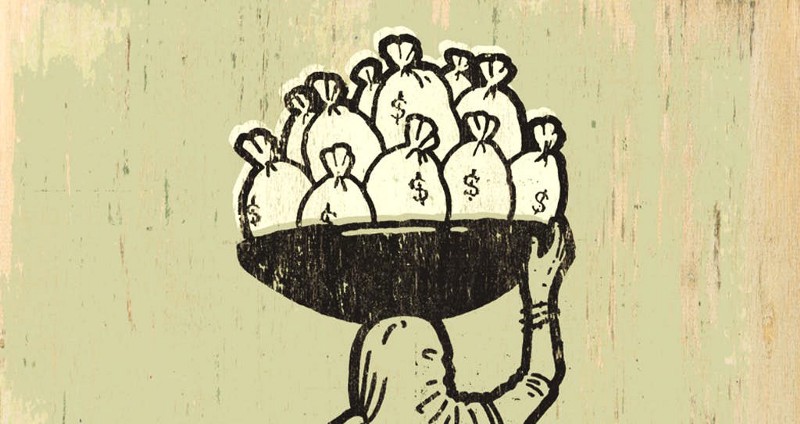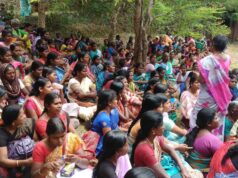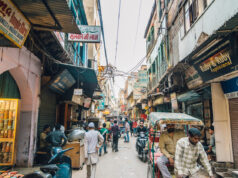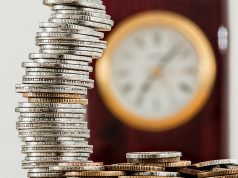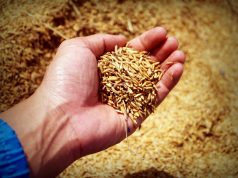‘[The] Rich are getting richer and poor are becoming poorer!’ is now a common refrain used in India in any discussion on economic reforms. Since 1991, India has undergone a great deal of liberalisation internally and externally. Many feel that the gains of this liberalisation and globalisation have not accrued to the poor.
Unequal Distribution of Economic Freedom
One can dispute this charge by pointing out that the proportion of population below the poverty line (1) has declined from 35 to 26 percent since 1990. Nonetheless, I agree that the poor have not gained as much as they could have in the new India. But it is not because the rich have taken from the poor, as commonly implied. The reason is simple: the areas in which the middle and upper classes make their living have seen the highest degree of liberalisation, while the areas in which the poor earn their livelihood have seen the fewest reforms.
Economic freedom for the rich has increased but not for the poor. In the Fraser Institute’s Economic Freedom of the World Report 2006, India’s rank has improved from 80 in 1990 to 53 in 2004. This overall increase in economic freedom has not been the same across all classes.
The poor still live under the draconian license-permit-quota raj, as the system of extensive government intervention in India is known. Today setting up a factory or a call center requires no government license. But anyone wanting to run a tea-stall or to become a street hawker or a cycle rickshaw puller or to work as a railway porter requires a license. For entry-level professions that need low skills and little capital, licenses are still mandatory.
The industrial entrepreneurs now have economic freedom but the street entrepreneurs do not. A vast majority of street entrepreneurs operate without a license — illegally, informally. They are open to constant harassment and extortion by the police and municipal officers.
The License Raj on Street Entrepreneurs
Consider cycle-rickshaw pullers and street vendors in the cities and towns of India. Delhi has approximately 500,000 cycle-rickshaws providing an affordable and accessible transportation service to the poor. The Municipal Corporation of Delhi has mandated that rickshaws have to be licensed and only 99,000 licenses shall be given out. More than 80% of the cycle-rickshaws are illegal. Studies suggest that on average a bribe of Rs 200 per month per cycle rickshaw is paid. Even the licensed rickshaws have to pay up. The government functionaries extort Rs 10 million a month from the cycle-rickshaw pullers! Similarly, Delhi’s about 600,000 street vendors operate without the necessary license and pay up about Rs 12 million per month in bribes. This is the burden of the license-permit raj — of economic unfreedom — on the poorest of the poor in Delhi.
During municipal raids, which occur regularly on a weekly or monthly basis, all the goods, hand cart, weighing balance and other equipment, as well as rickshaws are impounded. Once the rickshaw is seized, it takes 5–15 days and more bribes to get it released. During these days, the puller loses his means of livelihood. Because of the constant threat of raids, the street hawkers are unable to expand their business. If the hawkers spread out further by acquiring more goods to sell, they won’t be able to grab them quickly and run when the police van beacons. The hawker can expand his business only upto the reach of his arms. No wonder that India’s urban poor are still earning a subsistence living. This is because of the lack of liberalisation in the areas in which they earn their living.
Well-intentioned Laws and the Poor
In addition to the stifling licensing system, myriad rules and regulations create further hurdles. Many of these rules are well-intentioned but the outcomes are perverse, just as the Law of Unintended Consequences predicts. Delhi has a law that the owner and the driver of a cycle rickshaw must be the same person. Renting of rickshaws is illegal. The law intends to promote ownership and to limit exploitation of rickshaw pullers by the renters. But how about a migrant who does not have enough money to buy a rickshaw and does not have any other skills? Many of the migrants are seasonal; they come to the city during the non-agricultural season, earn some cash and go back to work on the farm. Obviously there is demand for rental rickshaws, and the suppliers are easy to find. The rental charge however includes a premium for the risk of running an illegal business. Supply of rental rickshaws is limited since honest people do not enter this business. Not surprisingly then a five-moth’s rent equals the price a new rickshaw. Is this artificially higher rent good for the rickshaw puller?
Equally importantly, when a poor migrant somehow buys a rickshaw, what happens when he has to go back to the village for a few months? He cannot rent out his rickshaw. A person can ply a rickshaw for 10–12 hours a day. He cannot rent it out for the rest of the day. A rich man’s capital — a call center — can work for 24 hours, but a poor man’s capital — his rickshaw — can not. If he falls sick, his rickshaw must lie idle. The only business he knows, he cannot grow in it. His earnings are forever limited to what he can earn from one rickshaw. And people wonder, why he is poor!
The Rural Poor with no Agricultural Reforms
The rural poor who earn their living in agriculture fare no better. The agriculture has been the area of least reforms. Much agriculture produce cannot be transported across a district line, let alone across the state or the country. India does not even have a common market in agricultural produce. A law in the state of Maharashtra requires farmers to sell their sugarcane to a specified sugar mill in the district. In Kerala, the law mandates that once the farm is registered as producing one crop, it cannot be changed without government permission! Recently, farmers who had planted sugarcane instead of rice saw their crop being uprooted by union workers. Rice and sugarcane farm workers belong to different unions. The Essential Commodities Act considers agricultural produce so essential that it has condemned its producers to perpetual poverty through a multitude of inane restrictions.
The urban and rural poor of India are unenthusiastic about liberalisation, not because it is making them poorer as some claim, but because they have not seen much liberalisation in their means of livelihoods. We must do for them, what we have done for the rich: Give them their livelihood freedom.
Lifting the Poor: The Livelihood Freedom Test
The government must first remove all such hurdles by applying the Livelihood Freedom Test. Test all existing rules and regulations for their impact on the freedom to earn an honest living. Does any law restrict opportunities for any person to earn a living, particularly in a profession that requires little capital or skills? If so, then Review, Revise, or Remove. With the removal of these restrictions, economic growth would not only increase genuine employment but also be more balanced in offering opportunities to all classes of the society.
Note
(1) In India, poverty is determined according to whether or not a person gets 2,400 calories per day (see National Sample Survey Organization).
References
1. Government of India. National Sample Survey Organisation. Digital documents available through http://mospi.nic.in/mospi_nsso_rept_pubn.htm
2. Shah, Parth J. (2004). Introduction to the Indian edition. Economic Freedom of the World: 2004 Annual Report by James Gwartney and Robert Lawson. Reprinted by the Centre for Civil Society, New Delhi
3. Shah, Parth J. and Naveen Mandava, eds. (2005). Law, Liberty and Livelihood: Making a Living on the Street. New Delhi: Centre for Civil Society
Post Disclaimer
The opinions expressed in this essay are those of the authors. They do not purport to reflect the opinions or views of CCS.

